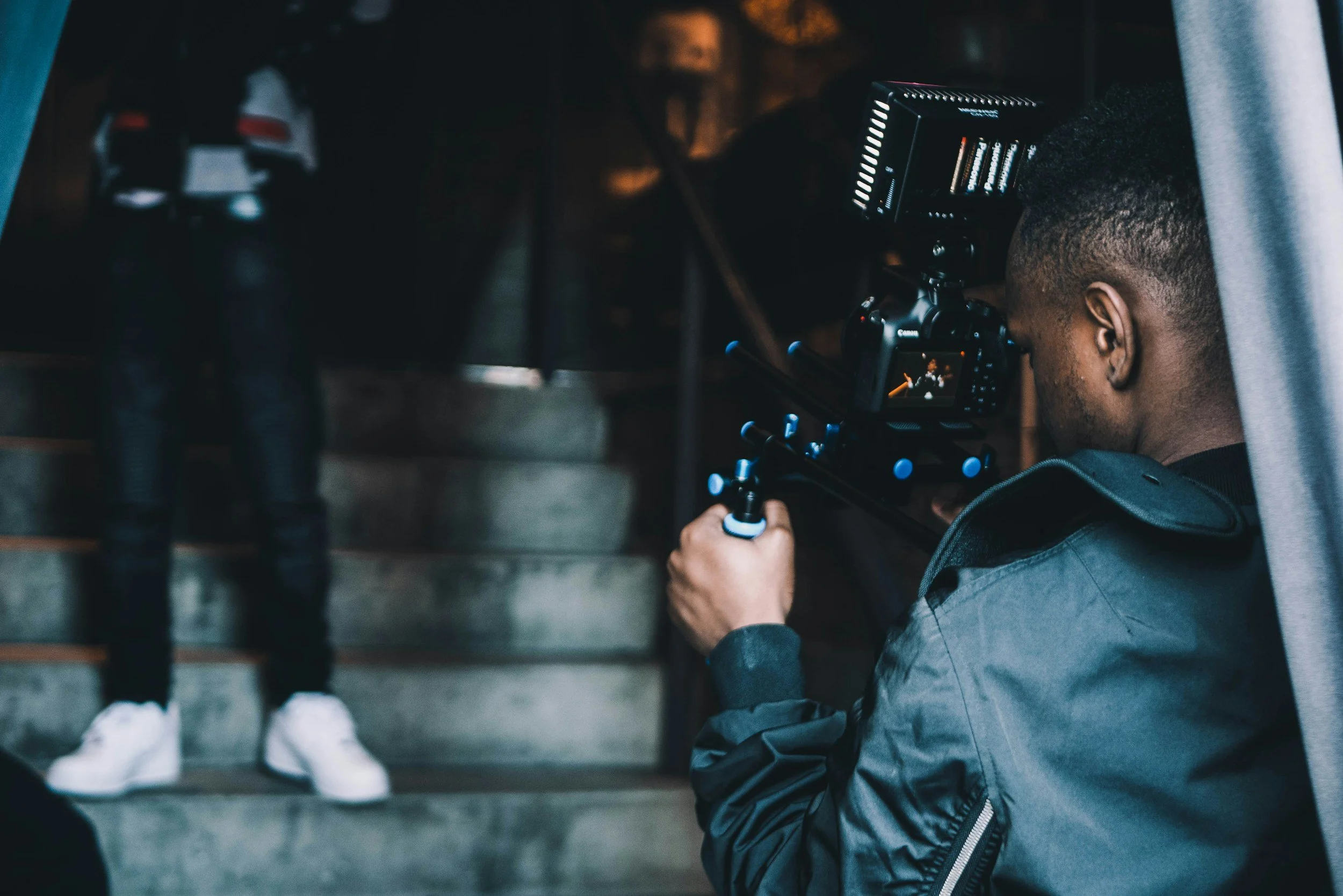The Unsung Art of Sound Design: Crafting Cinematic Atmospheres
Written by: The Buddi Team
Sound design is often the unsung hero of filmmaking, working behind the scenes to shape the emotional and psychological impact of a movie. It’s the subtle art of creating a sonic landscape that enhances storytelling, deepens immersion, and evokes emotions. While visuals and dialogue may grab the spotlight, it’s sound design that adds the finishing touches, making scenes come alive in ways that words alone cannot. Let’s explore the significance of sound design through a journey of cinematic experiences, highlighting films like A Quiet Place, Zone of Interest, Oppenheimer, and others that illustrate the power of sound in film.
The Invisible Craft
Imagine watching a film with the sound turned off. The dialogue might still convey some of the story, but the atmosphere, the tension, and the emotional depth would be significantly diminished. Sound design is not just about adding noise; it’s about crafting an immersive experience that complements the visual storytelling. It encompasses everything from the ambient sounds that create a setting to the specific sound effects that accentuate actions or emotions.
In Zone of Interest (2022), directed by Jonathan Glazer, sound design plays a pivotal role in establishing the film’s oppressive atmosphere. The film’s haunting score and meticulous soundscapes amplify the sense of dread and isolation, turning the ordinary into something unsettling. The sound design does more than just fill the silence; it builds a sonic environment that reflects the film's themes and emotional undercurrents. The subtle use of ambient noise and eerie sound effects creates a palpable tension, drawing the audience into the psychological landscape of the story.
The Symphony of Silence: Oppenheimer
Christopher Nolan’s Oppenheimer (2023) provides another compelling example of how sound design can shape a film’s impact. Here, the sound design is integral to the storytelling, heightening the drama and intensity of the narrative. One of the most striking aspects of Oppenheimer is its use of silence and subtle sound effects to build tension and convey the gravity of the story.
Nolan and his sound team, led by the legendary editor Richard King, use sound to create a profound sense of scale and weight. The film’s depiction of the atomic bomb’s development is accentuated by the way sound is manipulated to emphasize the historical and emotional stakes. The quiet moments, where the absence of sound speaks volumes, are as crucial as the dramatic bursts of noise. This careful balance of sound and silence reflects the internal and external conflicts faced by the characters, adding depth to their psychological states and the narrative as a whole.
The Impact of Soundscapes: Blade Runner 2049
In Blade Runner 2049 (2017), directed by Denis Villeneuve, sound design is used to create a richly detailed futuristic world. The film’s soundscape is a fusion of ambient sounds, electronic music, and subtle effects that immerse viewers in its dystopian setting. The collaboration between sound designer Mark Mangini and composer Hans Zimmer results in a sonic experience that is both otherworldly and grounded in its emotional resonance.
The film’s use of sound is particularly effective in creating a sense of place. From the hum of futuristic vehicles to the distant echoes of a decaying city, the sound design paints a vivid picture of a world that feels both alien and familiar. This immersive quality is crucial in drawing viewers into the story and allowing them to fully engage with the film’s themes and atmosphere.
The Emotional Resonance of Sound: A Quiet Place
Sound design is not only about creating atmosphere but also about evoking emotions. In A Quiet Place (2018), directed by John Krasinski, sound design is central to the film’s tension and horror. The film’s premise—characters living in a world where making any noise can attract deadly creatures—relies heavily on its sound design to build suspense and fear.
The film’s use of sound is meticulously crafted to enhance the sense of dread. The quiet moments are charged with tension, making every small sound feel significant. The occasional bursts of noise are used sparingly but effectively to create jump scares and heighten the film’s overall impact. This careful manipulation of sound not only intensifies the horror but also deepens the emotional connection with the characters and their struggle for survival.
The Subtle Art of Enhancement: The Revenant
Alejandro G. Iñárritu’s The Revenant (2015) offers another example of how sound design can enhance a film’s storytelling. The film’s sound design, led by sound designer Martin Hernández, is crucial in immersing viewers in the harsh, unforgiving environment of the American frontier. The use of natural sounds—such as the crunch of snow underfoot, the rustle of wind, and the distant calls of wildlife—creates a realistic and immersive experience.
The sound design also plays a role in accentuating key moments of the film, such as the intense bear attack scene. The visceral sounds of the bear’s growls and the characters’ grunts and screams are amplified to heighten the scene’s intensity and visceral impact. This attention to detail in the sound design helps to convey the rawness and brutality of the film’s setting and events.
The Creative Process: Crafting the Soundscape
The process of creating a film’s sound design involves several key steps, including the recording of location sounds, the creation of sound effects, and the mixing of audio elements. Sound designers work closely with directors and other members of the production team to ensure that the soundscape aligns with the film’s vision and enhances the storytelling.
One of the key aspects of sound design is the creation of a sound palette that complements the visual elements of the film. This involves selecting and manipulating sounds to fit the film’s tone and atmosphere. For example, in a historical drama, the sound design might focus on authentic period sounds, while in a science fiction film, it might involve the creation of entirely new and imaginative soundscapes.
The Future of Sound Design
As technology continues to advance, the field of sound design is evolving. Innovations such as immersive audio formats and advanced digital tools are expanding the possibilities for creating dynamic and engaging soundscapes. The rise of virtual reality and augmented reality also presents new opportunities for sound designers to explore and experiment with interactive audio experiences.
Sound design will continue to be a vital part of filmmaking, shaping the way audiences experience and connect with stories. As filmmakers push the boundaries of storytelling, sound design will remain an essential tool for creating immersive and emotionally resonant cinematic experiences.
Conclusion
Sound design is a crucial but often overlooked aspect of filmmaking that has the power to transform a film’s impact and immerse audiences in its world. Through meticulous attention to detail and creative experimentation, sound designers craft sonic landscapes that enhance storytelling, evoke emotions, and create memorable cinematic experiences. Whether it’s the haunting atmosphere of Zone of Interest, the profound silence of Oppenheimer, or the immersive world of Blade Runner 2049, sound design is an art form that enriches the storytelling experience, proving that sometimes the most powerful elements of a film are those we don’t always consciously notice.
Check out Buddisystems
Sign up for Buddisystems today and unlock a world of creative possibilities!



